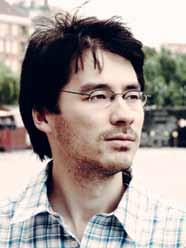

歡迎蒞臨第40 屆香港藝術節。
作為重要的國際
文化盛會,香港
藝術節每年呈獻 世界頂尖及多元 化的表演節目。
今年榮幸再邀請
到世界各地及本
港藝術精英,帶
來舞蹈、音樂、
歌劇及戲劇等精采表演,讓觀眾可欣 賞振奮心靈的繽紛藝饌。
我藉此感謝香港特區政府、香港賽馬
會、各贊助企業及個人的慷慨資助。
踏入第40周年,香港藝術節除了雲
集世界各地的藝術界翹楚,帶來精采
演出,亦透過學生票贊助計劃及「青
少年之友」計劃,培養年青人的藝術
體驗;此舉有賴一群熱愛藝術的有心 人慷慨資助,鼓勵年青人參與藝術節
的精采演出,提升日後觀賞藝術的興 趣。
各位觀眾的支持和參與,乃驅動藝術
節向前邁進的力量。感謝您前來欣賞 本節目,希望本屆藝術節為您帶來美 好的觀賞時光。
I warmly welcome you to the 40th Hong Kong Arts Festival.
Recognised for the quality and variety of its programming, the annual Hong Kong Arts Festival is keenly anticipated as the premier event in Hong Kong’s cultural calendar. This year we again welcome top international and local talent in dance, music, opera and theatre, whose artistry will delight and inspire us.
I wish to acknowledge strong support of the Government of Hong Kong SAR, the Hong Kong Jockey Club, and sponsors and donors who make this Festival possible. At this 40 year mark, I am particularly delighted that in addition to presenting wonderful artists to a discerning public, we can also nurture young audiences through our Student Ticket Scheme and Young Friends Scheme, thanks to the contributions of donors and supporters who generously share their own love for the arts with audiences of the future.
Thank you very much for coming to this performance. Your presence is paramount to the success of the Festival, and I wish you a very enjoyable experience.

歡迎閣下蒞臨第 40屆香港藝術 節。
今年香港藝術節 呈獻的藝術名家 及精采節目,就 如香港大都會一 樣多元化又璀璨 奪目。延續四十 年的優良傳統, 我們繼續邀請
本地及國際知名的星級藝術家點亮香 港大小舞台,呈現世界豐碩的文化傳 統,豐富未來的文化面貌。
衷心感謝多年來熱心支持香港藝術節 的各界人士及團體。我們過去的成 功源自他們對藝術的熱忱,他們亦深 信豐盛多元的文化藝術生活,是香港 作為名副其實的國際大都會之重要支 柱。
感謝您與我們一起慶祝香港藝術節的 四十年。藝術節團隊向每一位支持香 港藝術節的觀眾衷心致謝,期望您盡 享連串多姿多采的節目。
It is a pleasure and privilege to welcome you to the 40th Hong Kong Arts Festival.
The array of artistic talent and programmatic content presented at this year’s Festival is as diverse and multi-faceted as the city which has hosted this annual event in the course of four decades. As we add to the roll call of local and international luminaries who grace our stages, we continue to draw upon the impressive traditions available to us, and work to augment a heritage for the future.
I am deeply grateful to many individuals and institutions for their contributions to the Festival’s success over the years, informed by a love for the arts and an appreciation of how important it is for a major city worthy of that description to have a rich cultural life.
Thank you for being here to celebrate forty years of the Hong Kong Arts Festival. The Festival would not happen without its audience. The entire Festival team appreciates your contribution to the 40th Hong Kong Arts Festival and hopes that you enjoy many wonderful performances.
Charles Lee, Chairman
Tisa Ho, Executive Director
香港藝術節資助來自: The Hong Kong Arts Festival is made possible with the funding support of:
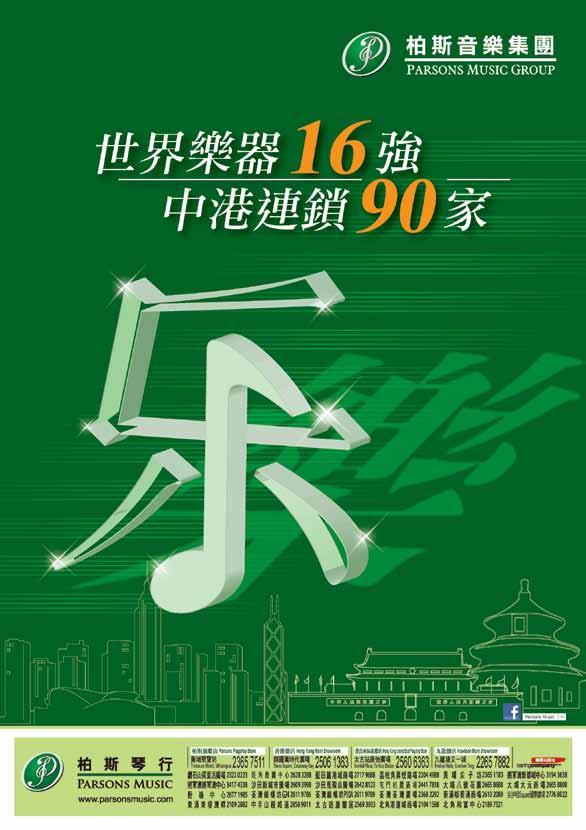
馬丁‧史岱費爾德 鋼琴獨奏會
Martin Stadtfeld Piano Recital
23.2.2012
巴赫 (1685-1750)
Johann Sebastian Bach
《平均律鍵盤曲集》第一部,BWV 846-869 The Well-Tempered Clavier Book I, BWV 846-869
演出長約1小時40分鐘,包括一節中場休息
Running time: approximately 1 hour and 40 minutes with one interval
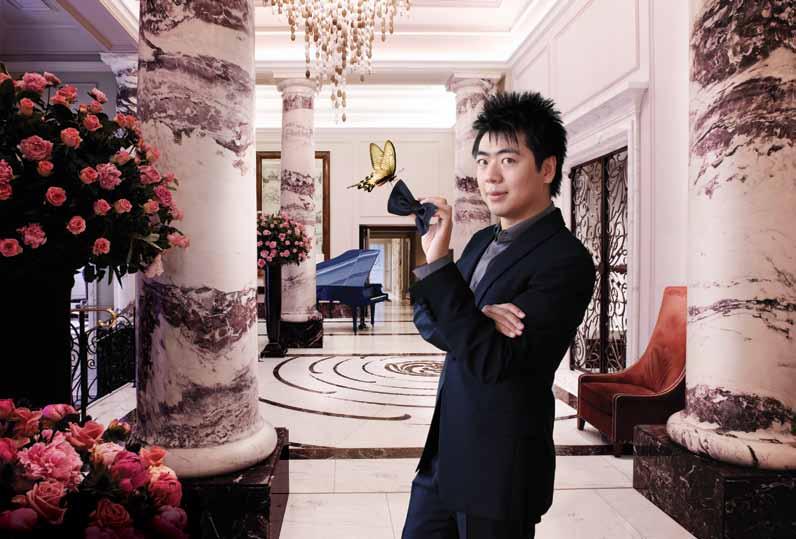
巴赫 Johann Sebastian Bach
《平均律鍵盤曲集》第一部,BWV 846-869
The Well-Tempered Clavier Book I, BWV 846-869
巴赫不單是偉大的作曲家,還是音樂 史上著名的老師。他的《平均律鍵 盤曲集》的成就超然,對後世的音樂 家來說,包括貝多芬、布拉姆斯、威 爾第、德布西、馬勒、荀白克,甚至 一眾爵士樂大師,都是學習的素材, 給予他們不少啟發。《平均律鍵盤曲 集》連同巴赫許多其他的鍵盤作品, 對無數業餘或職業鋼琴演奏者來說, 都是重要的訓練素材。
巴赫在《平均律鍵盤曲集》第一部的 標題頁上,註明作品是「為好學的青 年樂手作練習之用,也為熟悉此技巧
的人作消遣之用」。倘若我們想到這 部作品所含的無窮啟示,就知道這句 話是何等保守,除了演奏家和作曲家
外,《平均律鍵盤曲集》對音樂愛好 者來說也極具吸引力。
巴赫寫下很多聖樂,也有不少世俗音 樂作品如《平均律鍵盤曲集》。無 論創作何種類型的作品,他都把榮耀 上帝和受造物視為自己當藝術家的最 終目的。而《平均律鍵盤曲集》的奉 獻精神常被視為帶有宗教上的言外之 意:有種說法指《平均律鍵盤曲集》
是音樂家的舊約聖經,而貝多芬的 32 部鋼琴奏鳴曲則像新約聖經。大提
琴家卡薩爾斯曾在上世紀把無人問津
的巴赫無伴奏大提琴組曲重新展現人
Not only does J S Bach rank among the greatest of all composers: he is also one of the supreme teachers in the history of music. The influence of such achievements as The Well-Tempered Clavier (WTC) has been incalculable. It has served as a source from which generations of later composers — from the likes of Beethoven, Brahms, Verdi, Debussy, Mahler and Schoenberg to jazz masterminds — have learned many of the secrets of their art. And of course this and other keyboard collections by Bach have played a key role in the training of countless pianists, both amateurs and legendary performers.
Bach himself wrote on the title page of the first book of The Well-Tempered Clavier that it was intended “for the use and practice of young musicians who desire to learn, as well as for those who are already skilled in this study, by way of amusement”. What an understatement this seems to us, when we think of the inexhaustible revelations this masterpiece contains — not just for performers and composers, but for all music lovers.
Bach perceived his own mission as an artist — whether in the explicitly sacred music which makes up such a large proportion
無論如何,優律調律法,跟平均律一
樣,能讓音樂在本調以外漫遊,或從 本調「轉調」到半音音階中12 個音的 任何調,也不會有「跑調」的情況。
這種法則大大增加了音樂的表達能 力,就像從前只能用紅黃藍原色的畫 家,現在可以用色彩繽紛的調色板一
樣。而巴赫就把這種理論實踐出來, 寫了《平均律鍵盤曲集》,以半音音 階中12 個音為主音,創作出一對對前
奏與賦格曲,精采、有條理地展示這 種理論可如何運作。
巴赫的研究很有系統,作品包含了每
一個音的大調和小調調式,因此一共
誕生了 24 組前奏與賦格曲,由 C 調開 始,先為大調,後為小調,然後上升
半音,一直走到 B 小調才完成整個循 環。巴赫在1722年完成這套作品,也
就是《平均律鍵盤曲集》第一部,那
時他差不多完成於利奧波爾親王宮廷 音樂總監的職責(部分前奏曲重用了
他之前的一些舊作)。20 年後,巴赫
把這個過程重做一遍,寫成了第二部 《平均律鍵盤曲集》。24 組前奏與賦 格曲因此有時會統稱為「四十八」。
可是,這套煞費苦心的作品在作曲家 死後半世紀才獲出版。
研究巴赫的音樂學家沃夫指出,對 24
個調進行有系統的探索只是 《平均律 鍵盤曲集》其中一項偉大之處。前奏
與賦格曲「兩種不同的複音音樂 前奏曲即興而自由,賦格曲則以主題 作主導、線條遵行嚴格的對位法」, 也是其重大特色。
12 notes that comprise the entire chromatic scale.
Since this systematic investigation covers both the major and the minor modes based on each note, the total number of such pairs comes to 24. Starting with C, the preludes and fugues are arranged in ascending order, half-step by half-step, with major followed by minor, so that the entire cycle ends in B minor. This cycle is what Bach completed as Book One of the WTC in 1722, near the end of his period as music director in the court of Leopold, Prince of Anhalt-Köthen, though some of the preludes recycle pieces he had written for other contexts. 20 years later, the composer repeated this traversal through all the keys and compiled a second book. Together, both sets of 24 preludes and fugues are thus sometimes called “the 48”. Yet it wasn’t until a half-century after Bach’s death that his painstaking manuscript of the work was actually published.
Christoph Wolff, a leading Bach expert, observes that the systematic exploration of all 24 keys is only one aspect of the WTC’s encyclopedic scope. In addition, the pairing of prelude with fugue contrasts “two fundamentally different kinds of polyphonic musical settings: improvisatory and free-style scoring in the preludes versus thematically controlled and strict contrapuntal voice leading in the fugues”.
This “improvisatory” quality is immediately apparent in the most-famous of them, the
這種「即興」的元素在好幾部著名的 前奏曲十分明顯,如曲集中第一首C大 調前奏曲,全曲幾乎都是以分解和弦 構成;曲集中還可以找到好些當時的 流行音樂,例如舞曲。賦格曲則比較 嚴格,要在樂曲中把「主題」呈現、 發展並再現;主題要以卡農的形式逐 一出現;而當一個聲音奏出主題時, 另一個聲部通常會奏出「對題」,每 次響起時其長度可能會有所增減, 又或者因應聲部的重叠變得激烈。聲 部的數目不等,有二聲部( E 小調第 十賦格曲,也是唯一一首二聲部賦格 曲)、三聲部(第二、三、六至九、 十一、十三、十五、十九和二十一賦 格曲)、四聲部(第一、五、十二、 十四、十六至十八、二十、二十三和 二十四賦格曲)和《平均律鍵盤曲 集》中最多聲部的五聲部賦格曲(第 四和第二十二)。在欣賞整套作品的 時候,聽眾會發現巴赫在節奏的運用 方面,同樣為主題賦予特色,各樂曲 用上多種不同的拍子記號。賦格曲在 巴赫手中,像後世的奏鳴曲式一樣, 發展出各種各樣的可能性,變得非常 豐富。前奏與賦格曲有時還有教人意 外的關係,例如降E 大調第七前奏曲使 用了雙賦格(包含了兩個主題),但 隨後的賦格曲則比較簡短。巴赫精密 的對位法常常可以把邏輯和情感結合 起來,正如演繹《平均律鍵盤曲集》 的權威鋼琴家杜蕾克所言,巴赫的音 樂結構「如蜘蛛結網一樣牢固」。
one in C major which launches the cycle and which consists almost entirely of waves of broken chords. Gestures from popular music of the day, especially dance forms, are gathered into the mix. The fugue, by definition, is a stricter form. Essentially, it involves the presentation, development and recombination of a theme — called the “subject” — which appears in a canon, as one voice is followed by another. Often a counter subject accompanies the statement of the subject by another voice, while each recurrence can be lengthened or shortened or intensified by a closer overlapping of voices. The number of voices itself varies: only two — Fugue No 10 in E minor, the only such example here; three — Fugue Nos 2, 3, 6-9, 11, 13, 15, 19, and 21; four — Fugue Nos 1, 5, 12, 14, 16-18, 20, 23, and 24; and the most in the WTC, five — Fugue Nos 4 and 22. As you listen to the entire cycle, it becomes clear how powerfully Bach uses rhythmic character, too, as part of a subject’s identity. A wide range of meters is meanwhile explored. Like sonata form for later composers, the fugue, in Bach’s hands, is endlessly malleable in its expressive richness. And there are surprises in the relation between prelude and fugue as well: Prelude No 7 in E-flat major includes a double fugue, one with two subjects, while the formal fugue that follows is shorter. Time and again, Bach’s intricate counterpoint astonishes in its marriage of logic and
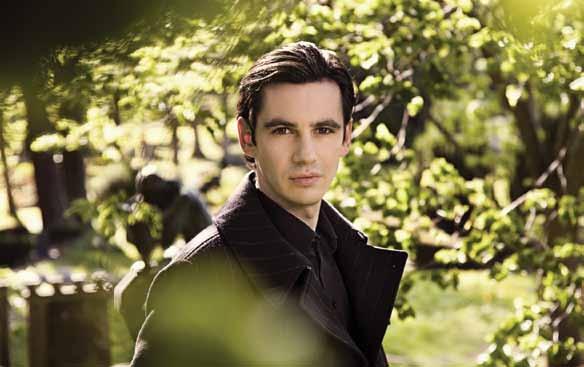
《平均律鍵盤曲集》第一部的旅程
由平靜簡單的 C 大調為起點,走到第
二十四 B 小調半音效果相當複雜的賦 格曲(也是最長的一部)。正如沃
夫所說,巴赫這部包羅萬有的傑作, 包含了極至的多樣性,卻又是和諧的
一體,為往後西方音樂的發展塑造了
路向,也擴闊了音樂演奏及創作的界 限。
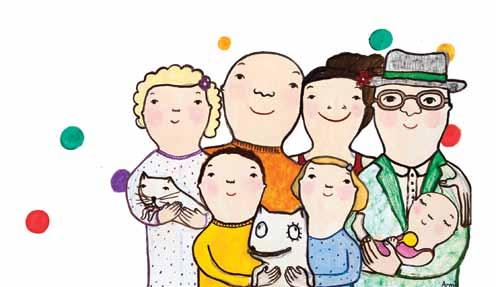
樂曲介紹︰湯馬士‧梅 中譯︰張婉麗
expression — all the while being “woven strong as a spider’s web”, in the phrase of pianist Rosalyn Tureck, one of the grand lineage of interpreters of this music.
The entire journey of this first book of the WTC leads from the calming simplicity and innocence of the C major pair to the chromatic complexity of the Fugue No 24 in B minor which is also the longest. As Wolff explains, Bach’s encyclopedic masterpiece, which balances maximum variety with overarching unity, shaped the future course of Western music and helped push the limits of musical composition as well as of performance.
Programme notes by Thomas May
巴維.哈斯四重奏
Pavel Haas Quartet
韋洛尼嘉•雅魯什科娃 小提琴
Veronika Jar šková Violin
伊娃•卡洛娃 小提琴
Eva Karová Violin
巴維•尼克爾 中提琴
Pavel Nikl Viola
彼得•雅魯謝克 大提琴
Peter Jar šek Cello
「世上最出色的弦樂四重奏?巴維.哈斯四重奏絕對配得上這個稱號。他們的音樂氣 勢恢宏,富冒險精神,而且激情四射。」(2010年1月《泰晤士報》)
巴維.哈斯四重奏2005年在意大利贏得著名的波西亞尼比賽後一舉成名,在世界各地 一流音樂廳演出,發行的四張唱片都獲得大獎,並獲聽眾及樂評人一致好評。
2011 / 12 年度,四重奏在阿姆斯特丹皇家音樂廳、巴黎香榭麗舍劇院、蘇黎世市政 廳、維也納音樂廳、倫敦南岸中心和倫敦威格摩爾音樂廳等地舉行演奏會;在布魯塞 爾、慕尼黑、斯德哥爾摩、哥本哈根和馬德里的主要音樂廳也看到他們的足跡。四重 奏將在香港和日本的東京、大阪、名古屋和橫濱等地巡演,及後會在美國舉行為期兩 周的巡演,以卡內基音樂廳為終點站。2011 /12 年度四重奏的另一項計劃是首度與女 中音瑪格達蓮娜.科切娜合作灌錄唱片及巡演。
四重奏最近在萊茵高音樂節、舒伯特音樂節、三藩市和馬德里國家音樂廳演出。2007
年科隆愛樂樂團在回聲古典大獎上提名四重奏為最佳新晉組合,從而開展了樂團的世 界巡演之旅。2007 到2009 年四重奏加入英國廣播公司「新生代藝術家計劃」,並於 2010年榮獲波勒蒂布托尼基金會頒發的2010特別室樂獎學金。2010/11年度起,四重 奏成為格拉斯哥皇家音樂廳的駐場藝術家。
捷克唱片公司Supraphon為巴維.哈斯四重奏發行了四張唱片,最新專輯收錄了德伏 扎克的F 大調第十二號《美國》及G 大調第十三號弦樂四重奏。專輯於2010 年秋季發 行,廣受讚譽。《周日時報》給予專輯五星評分,並表示︰「他們演繹的《美國》四 重奏可媲美以往這首曲目最優秀的錄音作品,在這個領域內他們已經無人能及。」另 一張收錄了普羅科菲耶夫弦樂四重奏第一號、二號,以及小提琴二重奏鳴曲的唱片則
“The world’s most exciting string quartet? Well, they suit the tagline better than most. Their tone is large, quasi-orchestral. They take risks. Above all, they play with passion.” The Times, January 2010
Since winning the Paolo Borciani competition in Italy in spring 2005, the Pavel Haas Quartet has performed at the world’s most prestigious concert halls and recorded four award-winning CDs, receiving great acclaim from audiences and critics alike.
In 2011/12 the Quartet performs concerts at the Concertgebouw Amsterdam, Theatre des Champs-Elysées Paris, Zurich Tonalle, Vienna Konzerthaus, Southbank Centre and Wigmore Hall in London, as well as major venues in Brussels, Munich, Stockholm, Copenhagen and Madrid. The Quartet is planning a tour to Hong Kong and Japan, visiting Tokyo, Osaka, Nagoya and Yokohama and then a two-week tour of the US culminating in a performance at Carnegie Hall. A further project for 2011/12 will be the Quartet’s first collaboration with mezzo-soprano Magdalena Kožená, who they will record and tour with.

柴可夫斯基:D大調第一弦樂四重奏,作品11
Pyotr Il'yich Tchaikovsky: String Quartet No 1 in D, Op 11
柴可夫斯基寫了三部弦樂四重奏,第 一部寫於 1871 年2 月,用了很短時間 便完成。當時他是個新晉的年輕作曲 家,需要多寫新作來保持自己的知名 度。礙於財政問題,寫作弦樂四重奏 的可行性比管弦樂作品高得多。這部 弦樂四重奏雖然在這種帶點功利的情 況下誕生,但無疑是他最著名的作品 之一(當中的慢樂章大受歡迎)。在
此曲出現前,俄羅斯的音樂家不大重 視室樂,認為這類型的作品屬於西方 音樂,較為抽象,因此,柴可夫斯基
這部作品可謂奠定了俄羅斯的室樂基 礎。
第一弦樂四重奏帶有明顯的俄羅斯色
彩。在第一樂章中,柴可夫斯基巧妙 地把俄羅斯式的主題與西方古典音樂 的奏鳴曲式結合起來。開始時,樂隊
以輕聲的切分音節奏奏出氣喘似的和 弦,隨後整個樂章都以這種簡單的結 構繼續前進。開端的民謠特色像是在 模仿手風琴的和聲,因此這部四重奏 也有「手風琴」的別稱。
第二樂章〈如歌的行板〉是廣受歡迎 的作品,常被節錄成獨立作品演出, 柴可夫斯基在日記上還沾沾自喜的寫 道,作品甚至叫小說家托爾斯泰感動 流淚。作品的主題(首先是小提琴的 弱音響起)參考了一部烏克蘭民謠,
Tchaikovsky wrote the first of his three string quartets rather quickly, in February 1871. As an emerging young composer, he needed something fresh to keep his name before the public, and an orchestra was out of the question for financial reasons. But from this practical beginning Tchaikovsky created one of his best-known pieces and the Quartet’s slow movement became a hit. Even more, with this work he helped to lay the foundations for chamber music in Russia. His fellow Russian composers had, for the most part, neglected the medium as too Western and abstract.
At the same time, a Russian sensibility is closely associated with the First Quartet. The first movement deftly combines Russianflavoured thematic material with the sonata form so closely identified with classical music from the West. The ensemble begins with a series of softly wheezing, syncopated chords. The entire first movement grows out of this simple texture. The folk-like character of the opening was thought to mimic the harmonic flow of a squeezebox, so the First Quartet acquired the nickname "Accordion".
The Andante cantabile became extremely familiar as an often-excerpted piece and, the composer proudly noted in his diary,
據聞是柴可夫斯基從他妹妹家聽到一 位工人吹口哨而得來的曲調。
第三樂章〈諧謔曲〉把音樂轉到小 調,他的演奏指示是「快而不過份, 但要熱情」,當中節奏上的重音讓音 樂有種樸實的感覺。四重奏的民謠色 彩在終章最為顯著。柴可夫斯基崇拜 莫扎特,但在此曲中也認同海頓的幽 默感,在聽眾以為作品結束之時,音 樂突然瘋狂亂跑,然後才正式結束, 教人驚喜。
even moved the novelist Leo Tolstoy to tears. The main theme is artfully based on a Ukrainian folk tune, first heard on muted violin, that Tchaikovsky was said to have overheard being whistled by a worker on his sister’s estate.
Tchaikovsky shifts to the minor for a Scherzo which he asks to be played “fast, but not too fast, but all the same with fire”. Its rhythmic accents give the music an especially earthy character. The Quartet’s folk-like aspects especially come to the fore in the finale. The composer, who idolised Mozart, also includes a nod to Haydn’s humour with a false ending that is followed by a mad dash to the finish line.
蕭斯達高維契:升F小調第七弦樂四重奏,作品108
Dmitri Shostakovich: String Quartet No 7 in F sharp minor, Op 108
雖然柴可夫斯基對弦樂四重奏貢獻良 多,但這種類型的音樂在俄羅斯只偶 爾發出光芒,一直到蕭斯達高維契致
力發展弦樂四重奏,這種作品才得以 發揚光大。蕭斯達高維契自30 來歲起 到晚年一直都有創作四重奏,共寫了
15 部作品,是弦樂四重奏中的大師。
相比起蕭斯達高維契面對群眾的交響 樂(同樣是15 部),這些四重奏在某
程度上比較個人,比較像作曲家的自 白。
第七弦樂四重奏的確帶着很深的個
人情感。作曲家於 1960 年3 月完成此 曲,並將之獻給他 1954 年死於癌症 的第一任太太蓮娜。美國小說家兼評
論員萊瑟接觸到蕭斯達高維契的弦樂 四重奏後,發現這是個影響一生的 經歷,最近還出版了一部講述作曲
家全套弦樂四重奏的著作 Music for Silenced Voices (《給沉默聲音的音 樂》)。她認為第七弦樂四重奏實際 上對死亡「感到極度傷痛的慰藉」。
第七弦樂四重奏是蕭斯達高維契於弦
樂四重奏中首次使用小調(升F 小調) 的作品,也是最短的一部。但三個簡 短的樂章環環緊扣,作曲家在音樂動 機和織體的使用上集合了很多對比強 烈甚至難以理解的情緒,音樂聽起來 規模一點也不小。萊瑟把這種簡潔的 處理說成像「烹調已久的醬汁」變成
Even after Tchaikovsky’s contributions to the genre, the string quartet sparked only occasional interest among Russian composers until Shostakovich took it up in earnest. He composed a total of 15 quartets that span from his early 30s up to the end of his career, becoming one of the leading masters of the string quartet. In some ways, these works resemble an intimate, confessional diary, in contrast to the more public voice of the composer’s symphonies, of which he also wrote 15.
Certainly the Quartet No 7 conveys a sense of deeply personal reflection. Shostakovich completed it in March 1960 and dedicated the work to the memory of his first wife, Nina, who had died in 1954 of an unsuspected cancer. When the American novelist and critic Wendy Lesser discovered the Shostakovich string quartets, she found the experience life changing and even published a recent book about the entire cycle: Music for Silenced Voices . The Seventh Quartet, she observes, is at heart “about the comfort of truly mourning” for one’s dead.
The Seventh represents the first time Shostakovich chose a minor key (F-sharp) for his quartet cycle. It is also his shortest. Yet the composer’s treatment of musical motifs and textures in its three brief movements, each of them linked to the next, concentrates so many contrasting
精華一樣,「把內容濃縮起來,變得 更加強烈,而在這部作品中,所謂的 內容就是情感」。
作品以小提琴零碎的旋律展開,由三 個音構成的一組節奏突兀地反覆響 着,讓聽眾聯想起命中註定的、不祥 的叩門聲。停頓的使用和竊竊私語般 的樂句教人不安,後來大提琴才奏出 一道較實在的旋律,但整體氣氛仍是 矛盾的:那些玩樂似的、無憂無慮的 感覺瞬間變得激烈;而這種譏諷的態 度一直瀰漫在音樂中。在最後一道叩 門聲響過後,第一樂章來到終結。
第二樂章是一種令人恐懼、憂傷的悲 痛;所有樂器都用上了弱音器,讓重 複的伴奏一直伴隨着矇矓的記憶。
接着音樂出現戲劇性的變化:〈緩 板〉中被壓制的聲音給一連串粗暴的 和弦取代,踏入猛烈的、狂暴的終 章。終章是一部短的賦格曲。作曲家 把戲劇性進一步增強,高潮時樂手再 次奏起開端的樂思。後來這些刺耳的 叩門聲平靜下來,音樂回到第二樂章 那種模糊的氣氛中,像一部超現實的 圓舞曲。第一和第二樂章的樂思像鬼 魅般回來,那些可怕的叩門聲變得十 分微弱,把樂曲壓制到終結。
and even enigmatic emotions that the piece never feels like a “miniature”. Lesser aptly compares this concision to the way a “longcooked sauce” becomes reduced, noting that it “has the effect of condensing and therefore intensifying the content — in this case, the emotional content”.
The Quartet begins with fragmentary attempts at a melody by the violin. These are abruptly and repeatedly halted by a persistent three-note rhythm: for many listeners, it evokes the sound of ominous, fateful knocking at the door. The use of pauses and whispering phrases creates nervous tension, while the cello at last contributes a more substantial melody. Yet the atmosphere is ambivalent: what seems playful and light-hearted quickly becomes severe. These ironies pervade the music. After the first movement comes to an uneasy rest with the knocking motif, Shostakovich gives us a slow movement of chilling, haunted grief. All the instruments are muted, and a repetitive accompaniment threads its way through this hazy landscape of memory.
Then comes a dramatic shock: the suppressed tone of the Lento is cast aside by a brutal series of chords, and a fierce and violent short fugue launches the final movement. Shostakovich intensifies the drama, which reaches a climax with a return to the idea that opened the quartet, at full volume. The harsh knocking subsides with a return to the veiled mood of the second movement, now as a surreal waltz. Like ghosts, ideas from both of the earlier movements return. Those fateful knocks, now very quiet, bring the Quartet to a subdued close.











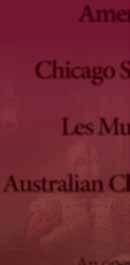












德布西:G小調弦樂四重奏,作品10
Claude Debussy: String Quartet in G minor, Op 10
雖然德布西晚年寫下一系列非常動人 的室樂作品,但他早期寫的弦樂四重 奏,也是他唯一的一部弦樂四重奏,
卻展示了年輕的德布西如何憑藉傳統 發揮嶄新的精神。這部四重奏 1893 年於巴黎首演,他彷彿要向一眾德國
大師留下來的傳統表示:「這些東西 我也能做到,不過我要用自己的方法 做。」 G 小調弦樂四重奏是德布西唯
一一部附有傳統作品編號的作品。
年輕的德布西在巴黎過着波希米亞式
的生活,到處都是新思想,他常與畫
家、詩人、音樂家分享各自的看法。
他對創作這種極受尊重的傳統古典音 樂很有把握,還加入了獨特的個人風
格,這些特色後來還成為了他的標 誌,如嶄新又微妙的和聲變化、生動 仔細的節奏形態,以及不把織體單單
視為一種手法,反而把它視之為作品 主要內容的設計。
這部弦樂四重奏按照傳統由四個樂章 組成,全都環繞着一個十分容易辨 認的主題,以不同的化身連接整套樂
曲。德布西在開端的幾個小節已經 把這個不安的主題展露出來,這種反 覆出現的「連章式」動機是德法兩國
音樂家率先使用的技巧,對十九世紀 末的聽眾來說早已十分熟悉。另一方 面,豐富的織體充滿美感,節奏又能
表現本樂章的音樂內容,這些特點都
Late in his career, Claude Debussy wrote a series of hauntingly beautiful chamber pieces, but the early String Quartet — the only work he completed in this genre — is a fascinating example of a young composer approaching inherited traditions with a fresh new spirit. This composition, which was premiered in Paris in 1893, looks squarely at the noble tradition inherited from the German masters as if to say, “I can do this too, but in my way.” The Quartet is the only work to which Debussy assigned the “oldfashioned” designation of an opus number.
New ways of thinking were part of the air Debussy breathed as a young Bohemian in Paris, inspired by the ideas he shared with fellow painters, poets and musicians. While working confidently within one of the most respected genres of the classical tradition, Debussy already reveals a number of the unique stylistic traits that would later become his musical signature: unconventional, subtle transformations of harmony, a vivid rhythmic sensibility, and an approach that treats musical textures as an essential part of a composition’s content rather than merely as its surface.
The Quartet is conventionally divided into four movements but revolves around a single thematic idea which returns in different guises to unify the entire structure. Debussy introduces this easily recognisable, restless motif within the opening measures. His use of a recurrent “cyclic” motif had
成為了這部弦樂四重奏教人驚喜的新 穎之處。
第二樂章像一首諧謔曲,承接着第一 樂章的探索精神。撥弦的聲音與(負 責演「連章」主題的)中提琴響亮的 跳動產生強烈對比,輕柔的節奏變化 則為聽眾帶來驚喜。德布西的傳記作 者指出,德布西對1889年在巴黎世博 會聽到爪哇加美蘭的聲音留下深刻的 印象,不少評論家都認為他嘗試在這 個樂章利用弦樂四重奏再現爪哇加美 蘭那複雜的層次感。
隨着兩個變化多端的樂章,接着響起 的是隱約發散着美感的〈小行板〉。
在這個樂章,中提琴再次突破傳統, 擔起重任。音樂的和聲既豐富又帶點 復古味道,使用了大小調二分前的早 期調式。這種難以捉摸的聲音使人想 起作曲家後來的歌劇《佩利亞與梅麗 桑德》。終章回復第一、二樂章的動 感(還直接引用了當中的元素),而 核心動機經過一番修飾再次登場。最 後音樂突然興奮地走到終結,把一路 上所有徘徊不定的幻想一掃而空。
been pioneered by both German and French composers and was familiar enough to audiences of the late 19th century. At the same time, the Quartet’s astonishing novelty emerges in Debussy’s use of rich, sensuous textures and rhythmic shapes to design the actual musical conversation in this movement.
The scherzo-like second movement continues in this spirit of exploration. The sonority of plucked strings is contrasted with the throbbing eloquence of the viola (which is based on the “cyclic” theme), while supple rhythmic alterations bring delightful new surprises. Debussy’s biographers point to the lasting impression made when Debussy encountered the sound of the Javanese gamelan at the Paris Exposition in 1889, and many commentators hear in this movement an attempt to recapture the gamelan’s complex interplay of layers in the format of a string quartet.
Following the restlessness of the first two movements comes an Andantino of veiled beauty. Here, too, notice how the viola acquires unusual prominence. Debussy’s harmonies are both succulent and somehow archaic in character, making reference to earlier modes before the binary division into major or minor. In some ways, the elusiveness of this sound world resembles that of his opera Pelléas et Mélisande , to whose composition he would soon turn. The final movement resumes the driving energy of the earlier movements (which are directly cited), while the central motif reappears in new disguises. With the suddenly excited rush of the coda, Debussy’s music shakes off any lingering fantasies encountered along the way.
舒伯特:C大調弦樂五重奏,D 956
Franz Schubert: String Quintet in C, D 956
這部大提琴五重奏寫於舒伯特人生的 最後一個夏天,那時他的產量十分驚 人。這部作品很容易令人想到是他絕
筆的告別之作,可是舒伯特其實早已 被梅毒困擾多年,相信不可能預計自 己的健康會突然下滑,甚至會在11 月
離世。作品包含了他晚年在音樂探索 上的重要元素,包括 C 大調「偉大」 交響曲和最後幾部鋼琴奏鳴曲的史詩
氣質、與摯友一同創作音樂的親密關 係、隨意的感覺和邁向浪漫時期的和 聲實驗。
音樂開始時聽起來像個慢板的引子, 但其實已經踏入第一樂章〈快板〉。
舒伯特從開端拘束的靜態氣氛巧妙地
寫出緊張的情緒,在戲劇性的第一主 題響起後,由兩部大提琴奏出的第二 主題發出動人的光芒。這個樂章的 長度比其他樂章長得多,可見他的雄 心壯志,當中表現了不同的情緒,有 非常急速的段落,也有從容不迫的片 段,像一位好奇的旅客探索新事物一 樣。結束時把開端的靜止和極具戲劇 性的主題結合起來。在整個樂章裏, C大調熟悉的聲音滲透出不尋常的濃厚 氣氛︰音樂彌漫着一種含糊的情緒,
與 C 大調一般產生的直接光輝截然不 同。
〈慢板〉同樣是比較大型的。當中的 主旋律是舒伯特最令人陶醉的傑作
Schubert composed the String Quintet in C during his final summer as part of an incredible outpouring of creativity. It’s difficult to resist associating this music with “swan song” gestures of farewell, but we should remember that Schubert had already been suffering for years from the effects of syphilis and could not have predicted the sudden decline in health that led to his early death in November 1828. The Quintet draws together the most significant aspects of the composer’s musical explorations from his last few years: the epic scope of the “Great” C Major Symphony and the final piano sonatas, the intimacy of music-making among friends, and the sense of spontaneity as well as harmonic experimentation that looks ahead to the romantic age.
The opening music only sounds like a slow introduction but is already part of the first movement Allegro. From the uneasy stasis of the beginning, Schubert’s clever scoring generates tension. The dramatic first theme is followed by a second theme of radiant loveliness introduced by the two duetting cellos. This ambitiously proportioned movement covers a wide emotional range, alternating between passages of desperate urgency and unhurried leisure that brings to mind a curious traveller exploring a new landscape. The coda recombines the static opening with the dramatically driven main theme. Overall, the familiar tonality of C major is imbued with an unusually rich
之一,在第一小提琴和第二大提琴夢 幻似的伴奏下,音樂的氣氛變得像夜 曲般。中段出現激烈的變化,音樂變 得激動、痛苦,舒伯特把調性移高半 度,並走進小調,由 E 大調到 F 小調。
最後音樂回到起初平靜的主題,但仍 有一點點的不安夾雜於其中。
第三樂章的〈諧謔曲〉充滿對比。樂 曲速度極高,很有幹勁。樂曲的主要 部分為行板三重奏,音樂在這裏放慢 步伐,由三拍變成兩拍,有些評論家 認為這裏暗示着喪禮進行曲,也是這 部五重奏另一個含糊不清的地方。像 〈慢板〉洶湧的中段一樣,音樂的調 性再次升高半度,由C 調走到降D 調。
終章是奏鳴迴旋曲,由一段激動的小 調段落展開,教人意外,後來才走到 大調。第二主題嘗試帶出一點歡樂, 但音樂還是繞到憂鬱的氣氛來。結束 前速度增加,舒伯特要樂手把之前所 有曖昧之處統統驅走,還用上一個令 人詫異的刺耳和聲,最後才讓各樂器 奏出同音C,為樂曲劃上句號。
樂曲介紹︰湯馬士‧梅 中譯︰張婉麗
ambience: instead of the straightforward brightness typically associated with this key, a deeper emotional ambiguity prevails
The Adagio is written on a similarly big scale. The principal melody, one of Schubert’s most ravishing creations, is given a magical accompaniment by first violin and second cello to create a nocturne-like atmosphere. A violent mood swing leads to the passionate, wrenching middle section, in which Schubert shifts the key up a half-step and into the minor, from E major to F minor. When it returns, the serene opening theme also absorbs something of the intervening restlessness.
The Scherzo abounds in contrasts. Extremely fast and aggressive in its pulse, the main section slows and veers from triple to duple meter for an andante trio in which some commentators discern hints of a funeral march — another aspect of the Quintet’s extraordinary ambiguity. Just like the Adagio’s turbulent middle section, the key here is likewise pushed up a halfstep from C to D-flat. The earthy, dancelike main theme of the sonata-rondo finale is given an unexpectedly agitated minor cast before settling into the major. A second theme makes another attempt at cheerfulness, but the music proceeds to take melancholy detours. Near the end, the tempo accelerates as Schubert rallies all his players in an effort to dispel these pervading emotional ambiguities — and adds a jarring harmonic surprise just before they agree on a single, unison C to conclude the Quintet.
Programme notes by Thomas May
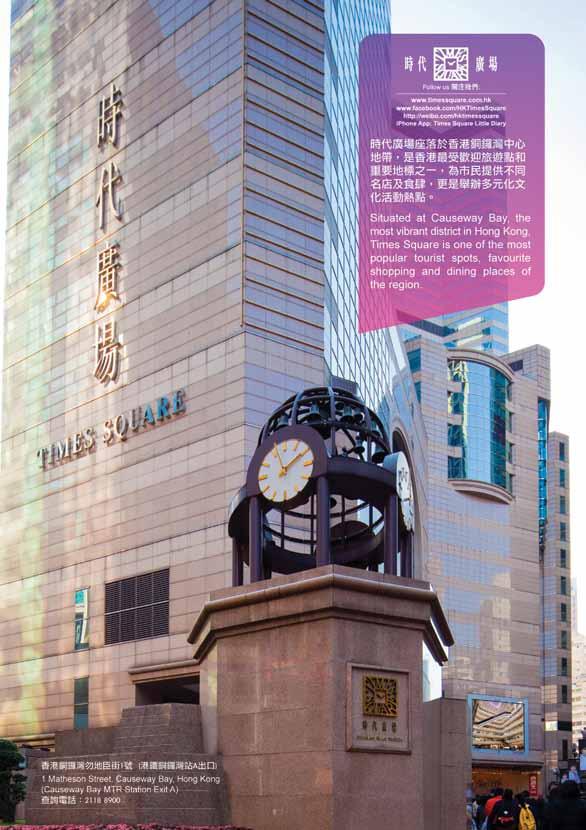




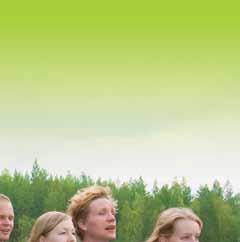


























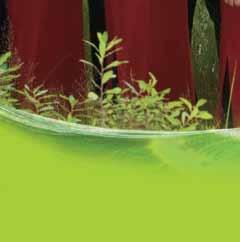




Danjulo Ishizaka Violoncello
日德大提琴手石坂團十郎出生於1979年,四歲開始學習大提琴。由1988至2004年期
間,他在德國柏林的艾斯勒音樂學院跟隨大提琴家波瑞斯‧帕戈門齊科夫學習。2006
年,他在塔比‧齊默曼的指導下完成在學院的訓練。除了這兩位老師外,他也深受伯
恩哈德‧格陵侯斯和梅納海姆‧普萊斯勒兩名大師的影響。
石坂曾獲多個大型獎項,包括2001在德國慕尼黑舉行的ARD國際音樂比賽獲第一名, 以及2002年在埃曼‧紐爾富爾曼國際大提琴大賽中勇奪頭銜。
2003 年11 月,石坂在演奏事業上有重要突破,在潘德瑞茲基指揮下,他與維也納交 響樂團一同在維也納音樂會堂演奏。其後,他在德國法蘭克福老歌劇院舉行演奏會, 《法蘭克福匯報》在報道中大讚演出:「天才開創音樂新紀元。」
石坂曾經在多個重要的音樂節中演出,包括克倫博格大提琴音樂節、石勒蘇益格-荷爾 斯泰因音樂節、萊茵高音樂節、基辛根之夏、羅克豪斯室樂音樂節、英國廣播公司的 逍遙音樂節、盧布爾雅那音樂節、盧塞恩音樂節、倫敦市藝術節、曼徹斯特大提琴音 樂節,以及薩爾茲堡復活節音樂節等。他在世界各地舉行演奏會,足跡遍及西班牙、 荷蘭、意大利、美國、波蘭、俄羅斯和日本等地。
除此之外,石坂曾與不少世界著名的藝術家合作,當中包括基東‧克雷默、莉莎‧巴 蒂雅許維莉、塔比‧齊默曼、薇薇安‧哈格納等。他曾以獨奏家身份與多個知名樂團 合作,包括巴伐利亞電台交響樂團、巴爾的摩交響樂團、日本 NHK 交響樂團、維也
納交響樂團、法蘭克福交響樂團、萊比錫布業大廳樂團、倫敦愛樂樂團等;曾合作的 指揮家則有基利斯托夫‧艾森巴赫、基利斯托夫‧波本、姆斯蒂斯拉夫‧羅斯特羅波 維奇、羅倫斯‧佛斯特、弗拉基米爾‧尤洛夫斯基、米哈伊爾‧尤洛夫斯基、里安納 度‧斯拉特京及克里斯托夫‧潘德瑞茲基等。
在2010 /11 年度,除了他經常合作的樂團外,他亦首度與德累斯頓愛樂樂團、馬林斯 基劇院交響樂團、英國廣播電台愛樂樂團等樂團合作。
在2006至2008年間,石坂成為英國廣播公司「新世代藝術家計劃」成員之一;2011 年,他獲委任為德累斯頓韋伯音樂學院大提琴教授。
他演奏所用的大提琴是曾由帕戈門齊科夫使用的沃爾夫岡‧許納貝爾大提琴,由克倫 博格學院提供。此外,他也會使用於1696年面世,由日本音樂基金會借出,名為「艾 勒斯佛公爵」的史氏名琴。
German-Japanese cellist Ishizaka was born in 1979 and received his first cello lessons at the age of four. From 1998 until 2004 he studied with Boris Pergamenschikov at the Hanns Eisler Conservatory in Berlin. He completed his studies there in 2006 under the tutelage of Tabea Zimmermann. Furthermore, he has been strongly influenced by Bernhard Greenhouse and Menahem Pressler.
Among many other major prizes Ishizaka won the first prize at the renowned ARD international music competition in 2001 in Munich, Germany, and the Grand Prix Emanuel Feuermann in 2002.
Ishizaka had his international breakthrough in November 2003, playing concerts in the Musikverein in Vienna with the Vienna Symphonic Orchestra under the baton of Krzysztof Penderecki. Following a performance at Frankfurt's Alte Oper, the Frankfurter Allgemeine Zeitung raved, “Genius breaks new ground.”
He performs at many important music festivals such as the Kronberg Cello, Schleswig Holstein and Rheingau Music Festivals; the Kissinger Summer, the Chamber Music Festival Lockenhaus, The BBC Proms, the Ljubljana Music Festival, the Lucerne Festival, the City of London Festival, the Manchester Cello Festival and the Salzburg Easter Festival. His international concert schedule takes him to Spain, the Netherlands, Italy, USA, Poland, Russia and Japan.
He has played with well-known artists including Gidon Kremer, Lisa Batiashvili, Tabea Zimmermann, Viviane Hagner and has performed as a soloist with renowned orchestras such as the Bavarian Radio Symphony Orchestra, Baltimore Symphony Orchestra, NHK Symphony Orchestra, Vienna Symphony Orchestra, the RSO Frankfurt, the Leipzig Gewandhaus Orchestra, and the London Philharmonic Orchestra under the baton of conductors such as C Eschenbach, C Poppen, M Rostropovich, L Foster, V and M Jurowski, L Slatkin and K Penderecki.
In 2010/2011, in addition to numerous repeat invitations, he performed for the first time with, among others, the Dresden Philharmonic Orchestra, the Mariinsky Theater Symphony Orchestra and the BBC Philharmonic Orchestra.
Ishizaka was chosen for the renowned "New Generation Artists scheme" by the BBC in 2006-2008. In 2011 he was appointed to a professorship for cello at the Carl Maria von Weber University of Music in Dresden.
He performs on the Wolfgang Schnabl cello, formerly played by Pergamenschikov and provided by the Kronberg Academy, as well as the 1696 Stradivarius Cello “Lord Aylesford”, on loan to him from the Nippon Music Foundation.

